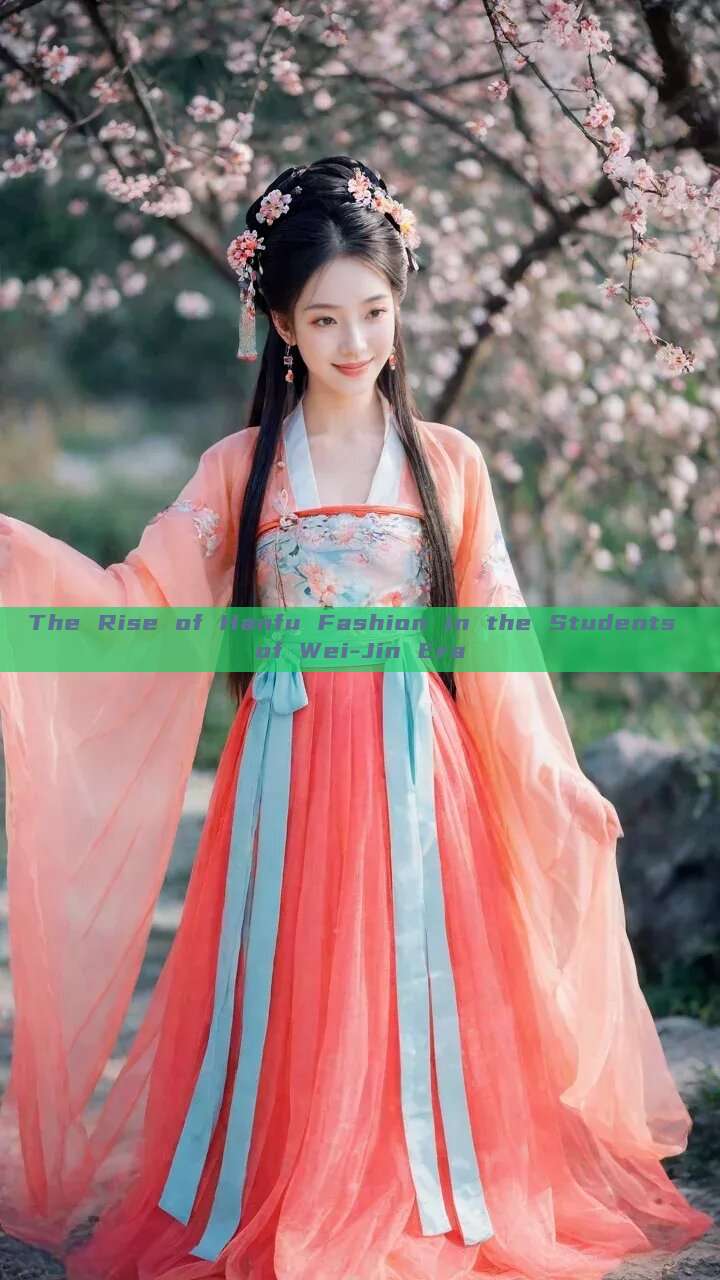In the modern era, a revival of traditional Chinese culture has been observed, and within this trend, the Hanfu fashion has gained significant popularity among students. Particularly, the style of Hanfu inspired by the Wei-Jin era has become a focal point for many college students, including those who identify as Hanfu enthusiasts. This article delves into the phenomenon of Hanfu fashion among female students and explores its influence on their lives.

The Wei-Jin era, spanning the third to sixth centuries in Chinese history, was a time of cultural and artistic flourishing. This era witnessed the emergence of unique fashion trends that were not only influenced by traditional culture but also reflected the social status and personal preferences of individuals. Today, female students are embracing the Hanfu fashion from this era, adopting it as a form of self-expression and cultural identification.
The rise of Hanfu fashion among female students can be attributed to several factors. Firstly, the revival of traditional Chinese culture has sparked a renewed interest in historical fashion. Many students are fascinated by the intricate designs and patterns of Hanfu, which offer a window into China's rich cultural heritage. Secondly, with the advent of social media and online platforms, the trend has spread rapidly, with influencers and celebrities promoting Hanfu fashion. This has encouraged many young women to embrace this style as a form of individual expression and cultural pride.
The impact of Hanfu fashion on female students is multifaceted. Firstly, it provides them with a sense of cultural identity and belonging. By wearing Hanfu, they are not only embracing a unique fashion trend but also connecting with their cultural roots. This connection with traditional culture fosters a sense of pride and belonging among these students. Secondly, Hanfu fashion encourages them to explore their creativity and individuality. With various styles and designs available, female students can experiment with different looks and find a style that reflects their personality and preferences.
Moreover, Hanfu fashion has also become a medium for social activism. Many female students are using this platform to promote awareness about traditional Chinese culture and its values. By wearing Hanfu, they are advocating for the preservation of cultural heritage and promoting cultural diversity on campus. This not only encourages respect for traditional culture but also fosters unity and harmony among different cultural groups on campus.
However, along with its popularity, Hanfu fashion also faces challenges. One major concern is the commercialization of Hanfu fashion. As the trend grows, many commercial brands are capitalizing on it by selling expensive Hanfu outfits that may not be affordable to all students. This creates a perception that Hanfu is exclusive and may deter some from embracing it due to financial constraints. Additionally, there is also a need to strike a balance between embracing traditional culture and modern values. While embracing Hanfu fashion is an expression of cultural pride, it should not be done in a way that excludes other cultures or creates a sense of cultural superiority.
In conclusion, the rise of Hanfu fashion among female students is a reflection of the revival of traditional Chinese culture in modern times. It offers them a sense of cultural identity, encourages creativity and individual expression, and acts as a medium for social activism. However, it is important to address the challenges associated with commercialization and ensure that Hanfu fashion remains inclusive and respectful of other cultures. By fostering an environment of mutual respect and understanding, female students can embrace this trend while also respecting other cultures and values.






